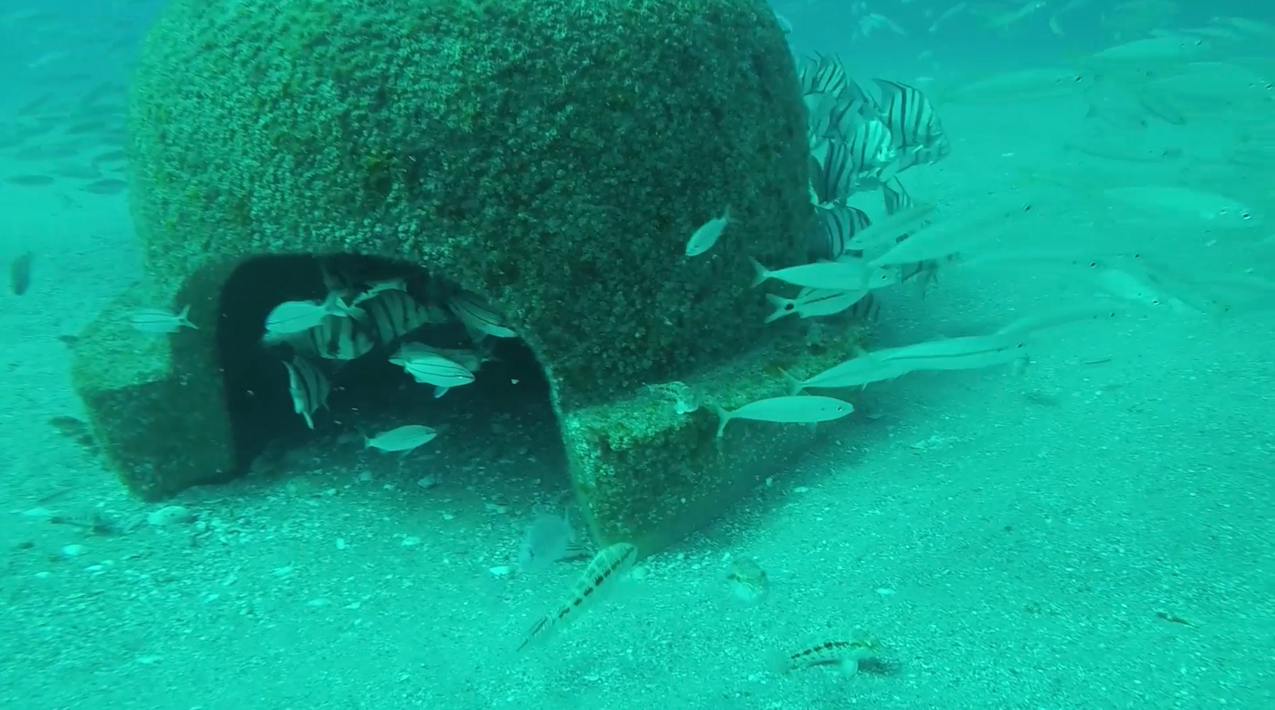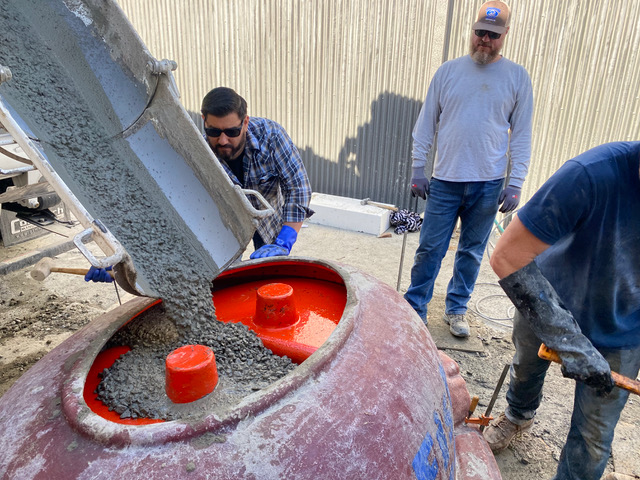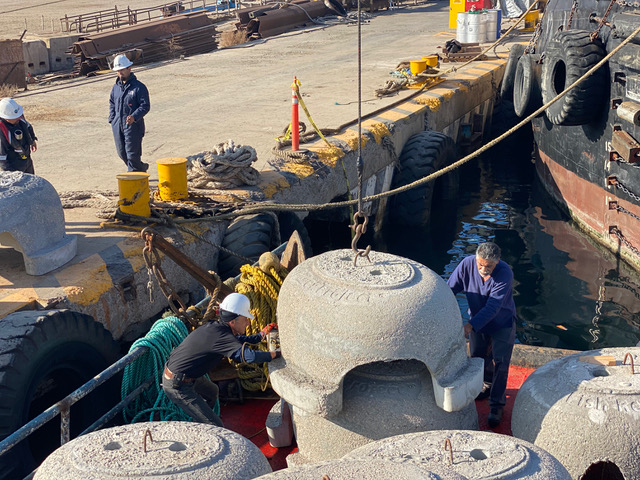Investing in Kelp, Carbon Offsets, and Our Future

The Santa Barbara-based Fish Reef Project is establishing a blue carbon bank to draw down carbon through kelp restoration and create carbon offsets in the process. Founded in 2012 by Chris Goldblatt, the Fish Reef Project is a nonprofit working to restore kelp and coral reef ecosystems around the world. Their invention, the Sea Cave, is specifically engineered to provide a physically and chemically friendly foundation around which kelp and coral can flourish and provide a habitat for fish and other marine life. In this way, the ecosystem becomes biogenic. “This means that it exports more life than it attracts over time,” said Goldblatt. “We’re creating a reef that looks like a natural reef after it’s grown over and produces at least as well as a natural region.” He started the Fish Reef Project with the goal of restoring kelp ecosystems near Santa Barbara but has found greater success elsewhere. At this point, the organization’s work has been primarily focused in Papua New Guinea, along both coasts of Africa, and in Baja California.
Establishing themselves as a blue carbon bank provides an opportunity for investors to get involved and be rewarded for their contribution towards kelp restoration. “We have a way to sequester large amounts of carbon,” said Goldblatt. “That’s one way we are gonna fund this – is through carbon initiatives. We are going to package and sell the carbon as registered blue carbon that industry and governments can buy as offsets. So, you can build your own offset bank directly out front.” The benefits of this type of restoration are exponential. Kelp grows incredibly fast and can sequester up to 20 times as much carbon per acre as a typical forest. It also lowers the local pH of seawater to levels that can sustain calcium-based life forms like oysters, clams, crabs, scallops, abalone, and lobster whose shells are in danger of disintegration due to ocean acidification. Furthermore, thriving kelp forests act as a natural barrier for wave energy, drastically decreasing the effects of erosion on beaches. This effect was felt close to home with the loss of Goleta Bay’s healthy kelp forest and wide beach after the 1983 El Niño storms.

Kelp relies on rocky bottom substrates to attach its holdfasts and sustain growth. These materials, for most of history deposited into the ocean every couple hundred years through regular landslides and erosion, nowadays, are necessarily restricted from making their way into the ocean. The Fish Reef Project’s Sea Cave technology provides that material upon which kelp can grow and thrive. Restoring kelp in this way provides an additional benefit: habitat creation for flourishing fish populations.
Dr. Jenn Caselle, a Research Biologist at the University of California, Santa Barbara Marine Science Institute, manages a large-scale kelp monitoring program in coastal Marine Protected Areas (MPAs), zones where commercial fishing and extraction are not allowed. The oldest MPAs in the country lie along the Central Coast in Southern California, but the results of her work are most striking when compared with data from across California. “We want to know if there are more and bigger organisms in the MPAs than in their control areas immediately outside,” said Caselle. “Those MPA effects are stronger in the south and get weaker as you go north. And that is almost certainly because the amount of fishing going on in the south is generally way more.” This means that along the Central Coast, areas not designated as MPAs experience the highest levels of fishing. Consequently, it is most important to preserve fish populations in these same areas.
The effects of the recent El Niño cycle from 2014 to 2016 and adjoining prolonged marine heat wave clearly illustrate this need. The heat wave altered ecosystems along the entire coast of California, but thanks to the presence of fish populations, will have vastly different long-term effects in Southern and Northern California.
As the heat wave put stress on kelp populations, a second negative effect arose: sunflower sea stars were wiped out state-wide by an epidemic. This left the purple urchin populations of Northern California to run rampant without their sole predator. Already weakened by the oxygen-low warm waters, the result was a devastation of Northern California bull kelp ecosystems. In the years since, it looks as though MPAs had no effect on kelp resilience or recovery.
The giant kelp of Southern California and the Central Coast had a different story; the heat wave cut down kelp populations, but not as drastically as in the north. Sunflower stars were similarly devastated, but, in the south, the California sheephead and California spiny lobster are predators of purple urchins too. “Kelp was lost pretty equally in and out of the Marine Protected Areas,” said Caselle. “We’re tracking it post heat wave, and the results are not dramatic, but it looks like the kelp is recovering in the MPAs faster. So, they didn’t necessarily show resistance, but now they’re showing some resilience in terms of recovering faster than the outside areas.” The kelp within the MPAs has recovered faster thanks to the California sheephead and California spiny lobster that keep purple urchin populations at bay. Both species are fished outside the MPAs, so their diminished populations have far less ability to shield kelp recovery in those areas.

MPAs preserve zones from the effects of fishing, but if surrounding areas aren’t revitalized, they will be overfished and cease providing ecosystem benefits. Using Fish Reef Project sea caves to restore kelp ecosystems and the fish populations that accompany and protect them from predators, is a win-win and provides the unique benefit of being a blue carbon investment. According to Bloomberg, as carbon becomes increasingly more regulated, the price of carbon offsets has the potential to rise significantly, creating a nearly $200 billion market by 2030.
“It is a little ironic, how folks in Africa and Papua New Guinea can rally to put money and resources together to make reefs,” said Goldblatt. “Whereas one of the wealthiest communities in America is letting its own kelp ecosystem languish in front of their bare eyes.” The Fish Reef Project-built reef in Papua New Guinea is thriving. Projects off the coast of both Senegal and Somalia are under way. “We’re not afraid to work in tough areas. We actually kind of like it because people understand the benefits,” said Goldblatt. “I’ve been doing this for 10 years working 40 hours a week and have never taken a salary of any kind, and our incredible volunteers have been here all the way through. This is not something we’ve ever made a living at.”
The Fish Reef Project is looking to secure a million dollars for a pilot study project in Goleta that will include both deployment and monitoring. Phase Two of the project would be a 65-acre restoration of the kelp at the heart of Goleta Bay with a $15-20 million price tag. Hopefully, this would spur a greater response and investment in blue carbon kelp restoration that could be extended across the Central Coast.
“We’re not necessarily walking around, asking for donations anymore,” said Goldblatt. “I’m just announcing that we’re building a blue carbon bank, and if folks want a way to get a return on their investment and put the money into kelp, they can reach out to us.”
Visit fishreef.org to learn more about the Fish Reef Project.
Asher Radziner is a Junior at Brown University, concentrating in Conservation Science and Policy. He works to find environmental solutions and unite people across boundaries.





